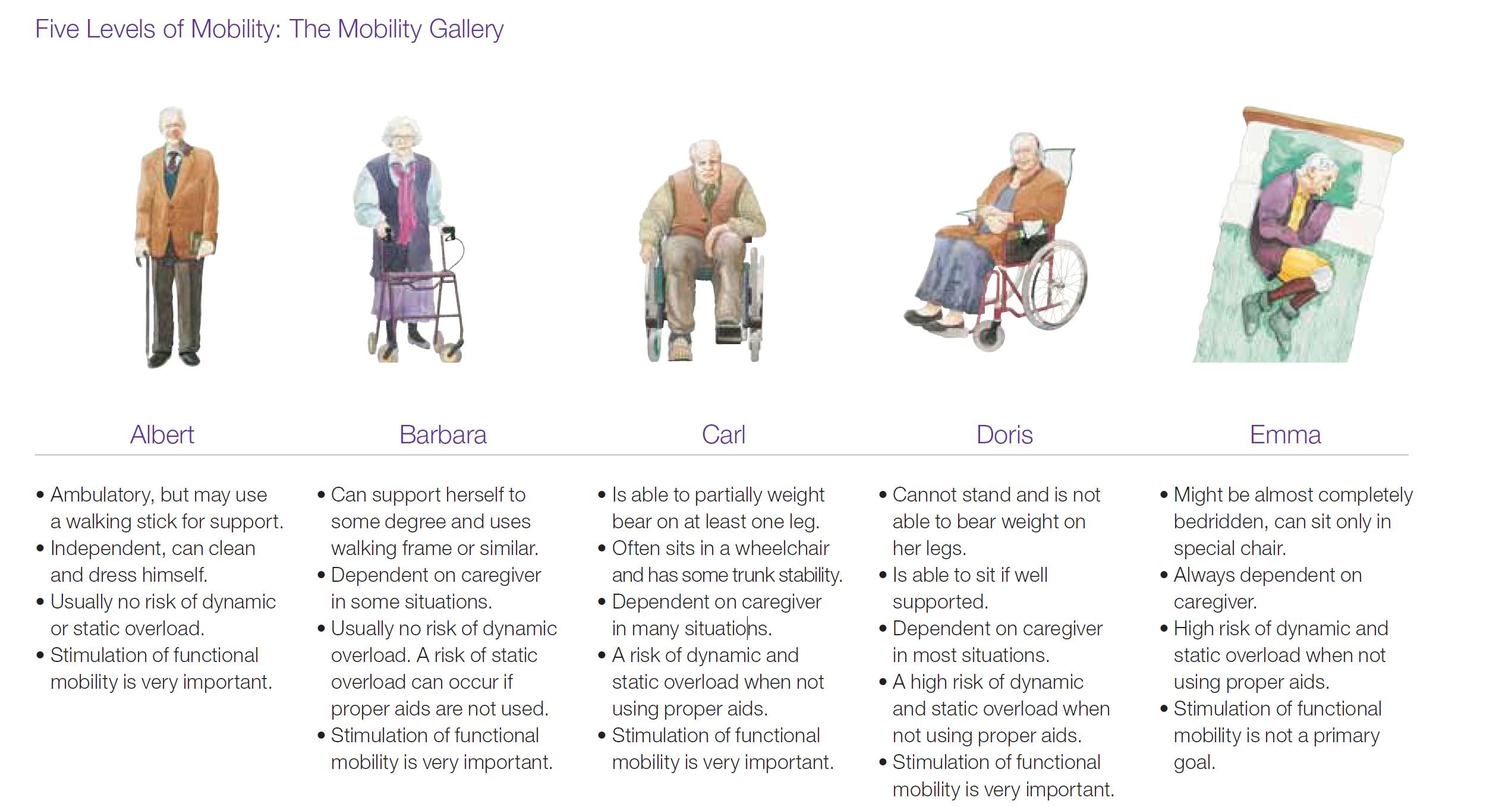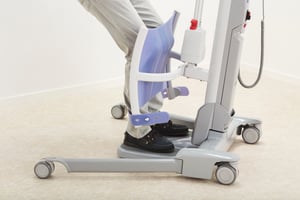
Patient transfer tasks occur across multiple healthcare settings and are often high risk activities for both caregivers and patients. Risk of patient and staff injury has led to the development of global Safe Patient Handling programmes.
These programs promote the development of processes, education, identification of appropriate equipment and technologies to support safety of both caregivers and patients. An aspect of these programmes is the provision of medical devices such as patient transfer equipment to assist in the common transfer tasks.
Common patient transfer tasks in care facilities include:
- Seated transfers
- Supine/lateral transfers
- Bed and chair re-positioning
During these tasks different transfer devices are used depending on patient mobility.
 s
s
How do caregivers choose a transfer device?
The patient’s level of mobility is key when choosing appropriate aids and planning for the right amount of space. As the patient’s mobility decreases, the number of aids and necessary space increases accordingly.
It is particularly important to select equipment that continuously encourages the patient to use all residual physical function and to stretch their ability, thus maintaining a greater degree of independence and mobility.1
Arjo has developed solution charts to indicate the correct aids for each level of dependency. Similar tools can be found in the CEN/ISO TR 12296(16)2 while, in the USA, equipment selection algorithms 3 are commonly used. In Europe, there are Clinical Practice Guidelines, which typically use a classification system of three or five mobility levels.
At Arjo, we have developed our Mobility Gallery to classify these five mobility levels as A,B,C,D,E or Albert, Barbara, Carl, Doris and Emma. See gallery below (click to enlarge):
Different transfer devices for different residents
The chart below shows the different transfer devices and its application to the functional mobility levels of the Mobility Gallery.
Click to enlarge image
For example, we can conclude that with Albert's mobility level there is little necessity to apply any transfer device. Furthermore, a patient with Barbara's mobility may require a: non-powered sit to stand aid while a patient with mobility level of a Carl most often requires a powered sit to stand aid also used for early mobilisation and rehabilitation. Patients in healthcare facilities with limited or no mobility such as a Doris or Emma will require a floor lifter or a ceiling lift.
Want to know more? Read our related articles in this series:
Related Blogs
|
|
|
|
5 things to consider when choosing a sit to stand lift for patient transfer. |
How many sit to stands transfer do caregivers perform with their patients per day. |
References:
1. ARJOHUNTLEIGH GUIDEBOOK For Architects and Planners Functional Design for Mobilisation and Ergonomics 4th edition, 2015,(p.24)
2. CEN//ISO TR 12296 (16)– 2013 Ergonomics - Manual Handling of People in the Healthcare Sector
3. Nelson A.L., Motacki K., Menzel N., The illustrated guide to safe patient handling and movement, Springer, 2009
All Images from Ajrohuntleigh Guidebook please click here to request a copy.



